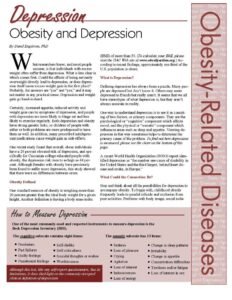Numbness on One Side of the Body

Understanding Numbness on One Side of the Body
What Is Numbness on One Side of the Body?
Numbness on one side of the body refers to a loss of sensation or feeling on either the left or right side of the body. This symptom can be alarming and may indicate an underlying health condition, ranging from minor nerve irritation to more severe issues like strokes. The cause of this numbness can vary, and it is essential to understand the symptoms to seek timely medical attention if necessary.
When to Seek Emergency Care
If you experience sudden numbness, weakness, or paralysis on one side of the body—especially in the face, arm, or leg—it could be a sign of a stroke. Other accompanying symptoms may include dizziness, confusion, slurred speech, blurry vision, or a sudden, severe headache. If you or someone you know is experiencing these signs, call emergency services immediately (911 in the US or your local emergency number). Stroke symptoms usually occur suddenly and require immediate medical intervention to minimize potential damage.
Possible Causes of Numbness on One Side
Numbness on one side of the body can arise from several different medical conditions. Some common causes include:
-
Stroke or Transient Ischemic Attack (TIA)
-
Spinal Nerve Compression
-
Multiple Sclerosis (MS)
-
Radiculopathy
-
Peripheral Neuropathy
-
Demyelinating Diseases
-
Infections or Autoimmune Diseases
Each of these conditions can cause varying levels of numbness, ranging from temporary discomfort to severe long-term consequences.
Symptoms of One-Sided Body Numbness
The sensation of numbness can vary in intensity, from mild tingling or “pins and needles” to complete loss of sensation. It can affect a specific part of the body, such as the arm or leg, or it may extend from the head down to the toe. Numbness on one side of the body may also be accompanied by other symptoms, including:
-
Weakness or paralysis in the face, arm, or leg
-
Drooping of one side of the face (a sign of Bell’s palsy)
-
Burning or tingling sensations (paresthesia)
-
Dizziness and confusion
-
Speech difficulties such as slurred speech
-
Vision changes in one eye
-
Loss of coordination or balance
-
Inability to understand or express language
-
Loss of bowel or bladder control
These symptoms may develop suddenly or progress gradually, depending on the underlying cause.
How Numbness Occurs: The Role of Nerves
The body’s nervous system plays a crucial role in sensation. Numbness is often the result of problems with the spinal nerve roots, which transmit signals between the brain and other parts of the body. Each nerve root serves a specific area of the body. For instance, the sacral nerve on the right side of the lower spine controls the right leg, while the left sacral nerve controls the left leg. Numbness occurs when these nerves are damaged or compressed.
Conditions Associated with One-Sided Numbness
Several medical conditions can cause numbness on one side of the body. Below are some common ones:
-
Stroke and Transient Ischemic Attack (TIA): A stroke occurs when the blood flow to a part of the brain is blocked or a blood vessel bursts, causing brain tissue damage. A TIA, also called a “mini-stroke,” has similar symptoms but does not cause permanent brain damage.
-
Radiculopathy: This condition involves compression or irritation of a spinal nerve root, which can affect various areas of the body depending on which part of the spine is affected.
-
Peripheral Neuropathy: Peripheral neuropathy involves nerve damage in the peripheral nervous system and can be caused by diabetes, infections, or trauma.
-
Demyelinating Diseases: Conditions like multiple sclerosis (MS) cause damage to the protective covering of nerve fibers, resulting in symptoms such as numbness and weakness.
Treatment Options for Numbness
Treatment for numbness on one side of the body depends on the underlying cause. Common treatments include:
-
Stroke: Immediate treatment may include clot-dissolving medications or procedures to restore blood flow to the brain.
-
Radiculopathy: Pain management, physical therapy, and sometimes surgery may be needed to address spinal nerve compression.
-
Peripheral Neuropathy: Managing the underlying condition (such as diabetes) and using medications to relieve nerve pain.
-
Demyelinating Diseases: Immunosuppressive therapies or medications to slow disease progression and manage symptoms.
FAQs About Numbness on One Side of the Body
What should I do if I experience sudden numbness on one side of my body?
If the numbness comes on suddenly and is accompanied by other stroke symptoms (like weakness, confusion, or slurred speech), it’s crucial to seek immediate medical attention.
Can numbness be caused by anxiety or stress?
Yes, stress and anxiety can sometimes cause temporary numbness or tingling, especially in the hands and feet. However, persistent or one-sided numbness should be evaluated by a doctor.
How is numbness diagnosed?
Your healthcare provider will review your symptoms, perform a physical examination, and may recommend imaging tests such as an MRI or CT scan to determine the cause of the numbness.
Preventing Future Episodes of Numbness
Depending on the underlying condition, steps to reduce the risk of further episodes may include lifestyle changes, medications, and physical therapy. Early diagnosis and treatment are key to managing conditions that cause numbness.
Key Takeaways
-
Sudden numbness on one side of the body can be a sign of a serious medical condition, such as a stroke.
-
Numbness can be caused by a variety of factors, including nerve compression, strokes, and systemic diseases.
-
Timely medical intervention is essential for accurate diagnosis and appropriate treatment.
Join Our Community
Stay informed with helpful health tips and updates. Subscribe to our newsletter for more valuable information on managing health and wellness.
Subscribe Now






